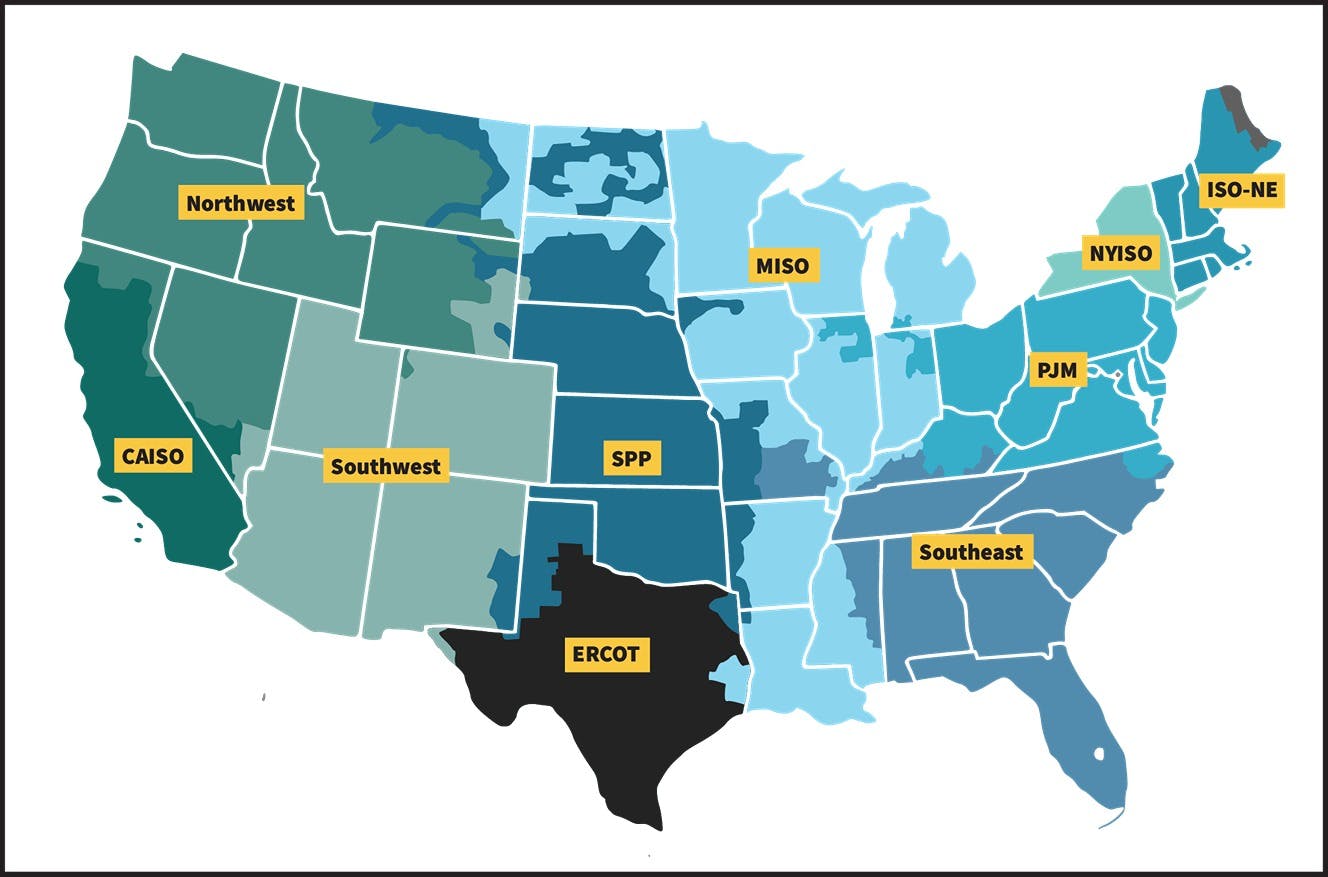When you add solar panels or energy-efficient technology to your home, you want it to save you money. Solar and storage, home chargers for electric vehicles, smart thermostats, and more can offer convenience and energy resilience, but saving money is often the primary motivation.
Government guidance issued in 2020 and being implemented now could open up new pathways for people who own these devices to make a bit of money from the energy they produce or save. The Federal Energy Regulatory Commission's Order 2222 allows owners of distributed energy resources to sell energy to regional transmission organizations, the entities that manage the grid for large parts of the country.
While it sounds complicated, it’s a relatively simple system that could mean a few extra dollars in your pocket.
See how much you can save with home energy changes
What is FERC Order 2222?
The Federal Energy Regulatory Commission (FERC) does a lot, including regulating wholesale energy sales. That’s when (in some parts of the United States) utilities buy the electricity they eventually sell to you.
FERC Order 2222 makes it possible for owners of small energy resources, like you might have in your home, to sell energy on the wholesale market, typically bundled with other small energy resources by a third party called an aggregator. Because removing demand on the grid has the same effect as increasing supply, aggregators can bundle demand reduction, too.
With FERC Order 2222 in effect, you could see new and additional opportunities to sell electricity or demand reduction through an aggregator.
How Does Energy Aggregation Work?
When you adjust your thermostat up on a hotter day, you save energy by running your air conditioner less. While that can be meaningful to your energy consumption, it’s not a big enough change to register at the level of the wholesale market.
Aggregators can combine many resources together to reach a meaningful size for the grid. (This is sometimes called a virtual power plant.) A group of thermostats raising their temperature setting by a few degrees or a group of standalone batteries sending energy to the grid can act as a single resource that meets size requirements to sell their services on those energy markets.
Does FERC Order 2222 Affect Me?
Maybe. FERC’s orders apply only to areas with regional transmission organizations or independent service operators. That accounts for much of the United States, but not all. The rule applies in California ISO, ISO New England, Midcontinent ISO, New York ISO, PJM Interconnection, and Southwest Power Pool territories.

Credit: FERC
According to FERC, each participating region is opening participation at different times, from now until 2030.
Even if you live in the right area, you’ll likely need to wait for an aggregator to start operating before you can participate. When one does, you can receive the benefits of selling the services of your distributed energy resources.
What Does Participation Look Like?
Aggregating energy resources isn’t new, but letting them participate in the wholesale market is. That means we have an idea of what participation will look like.
When you choose to work with an aggregator, you give up a bit of control of your thermostat, heat pump water heater, battery storage, or other device in return for some sort of compensation.
For example, you might give an aggregator permission to switch off a smart plug or adjust your thermostat by a few degrees a certain number of times a season. At the end of a season, the aggregator pays you for how many times they adjusted your devices.
Utilities often run similar plans where you voluntarily adjust your thermostat or have a switch installed on your air conditioner in return for bill credits. The level of compensation you receive will likely depend on the device you bring, how often it’s called upon, and the policies of each aggregator. As part of a virtual power plant, you might receive $30 to $50 for small devices called upon 30-50 times per year. Tesla runs a virtual power plant in California for owners of its Powerwall battery. Participants reported that, depending on the year, they made up to $300 in a year sharing energy with the grid.
See what home electrification can do for you:
 Andrew BlokWriter and Editor
Andrew BlokWriter and EditorAndrew has worked as a journalist and writer for four years, over half of those dedicated to covering solar. He currently lives in Tucson, AZ, where you might run into him walking his dog and birding while dodging the heat. He has degrees in English education and journalism.

